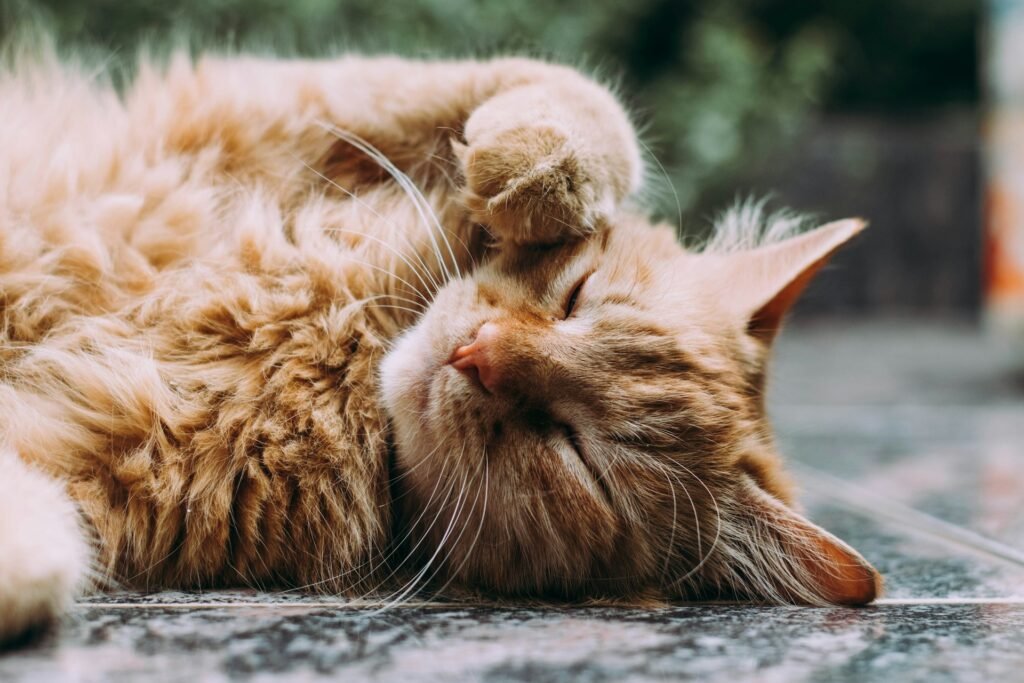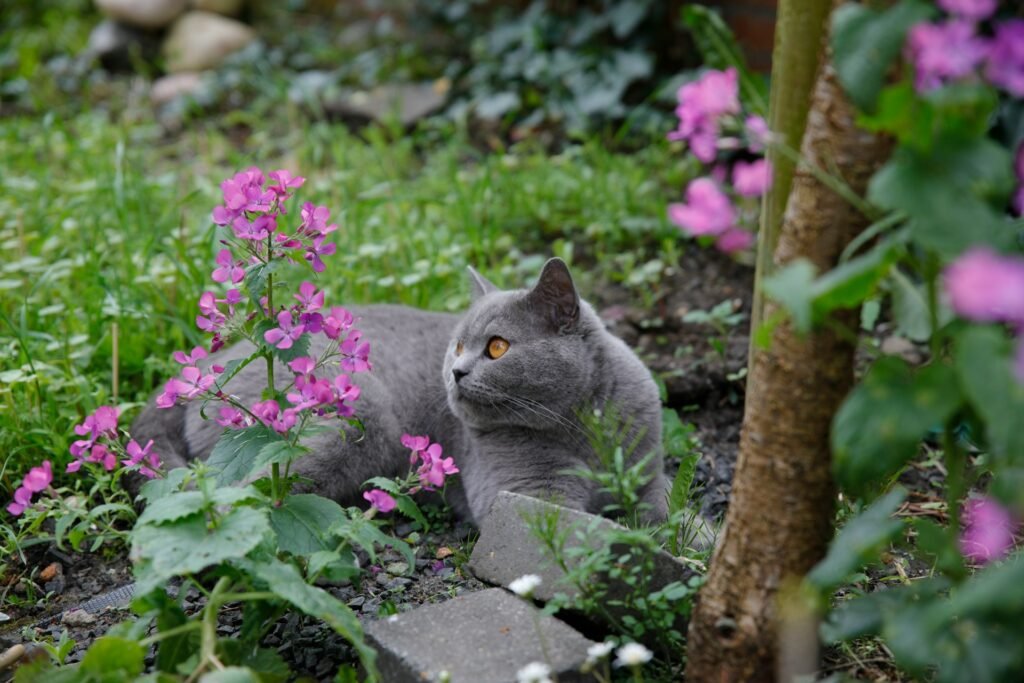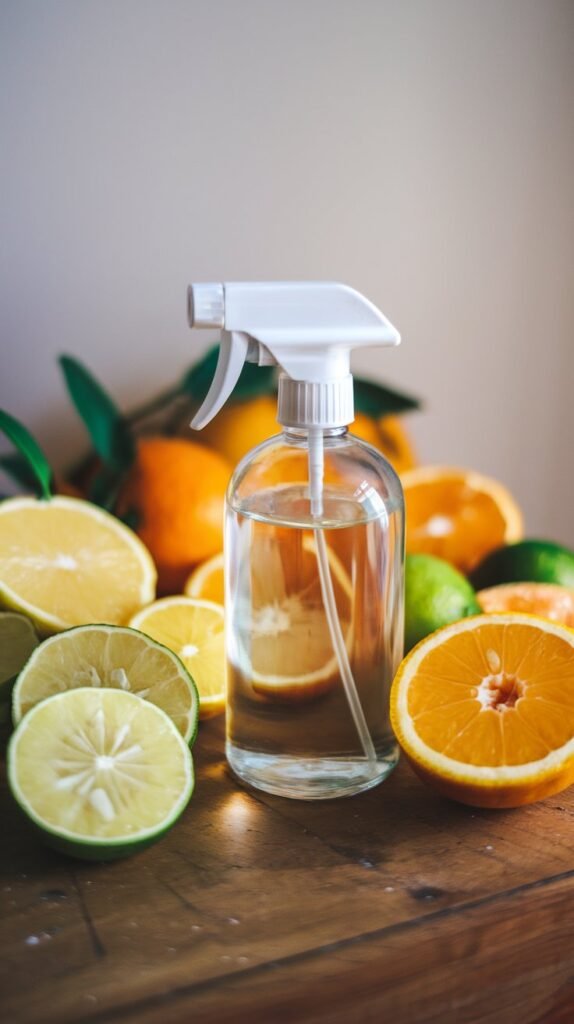Picture this: you step outside to admire your garden, only to find it’s been turned into a feline playground. Scratched-up soil and paw prints everywhere. Sound familiar?
If cats are invading your space, it’s time to take action.
This DIY citrus spray is an easy, natural, and safe way to keep cats away from your garden, furniture, or any other off-limits areas 🙂 Scroll down to see the step-by-step instructions!
Why DIY?

Before we dive into the recipe, let’s talk about why making your own repellent is the way to go.
Sure, you could head to the store and pick up a commercial option, but those can come with a hefty price tag—and often, a list of chemicals you can’t pronounce. Plus, some of them smell so bad, you’ll want to flee your own yard.
A DIY solution, on the other hand:
- Saves you money. The ingredients are affordable, and you probably already have most of them at home.
- Is safer for pets and plants. Commercial repellents sometimes contain chemicals that can irritate sensitive paws or noses. A homemade option keeps it natural.
- Smells better. To humans, at least. Cats? Not so much.
The Science Behind Cat Repellents
Here’s the thing: cats are ruled by their noses. Their sense of smell is 14 times stronger than ours, which means they’re incredibly sensitive to scents that they find unpleasant.

Citrus is one of those smells that cats cannot stand. While we might find the scent of lemon or orange refreshing, to a cat, it’s an olfactory “KEEP OUT” sign.
That’s why this DIY citrus spray is so effective. It uses natural citrus oils and juices to create a scent barrier that cats just don’t want to cross. The best part? It won’t harm them—it just gently encourages them to find somewhere else to hang out. Win-win.
DIY Citrus Spray Cat Repellent
Ingredients You’ll Need
This simple recipe requires just a few items, most of which you probably already have in your kitchen:
- 2 cups of water
- 2 tablespoons of fresh lemon juice (you can also use lime or orange juice if you prefer)
- 1 teaspoon of citrus essential oil (optional, but adds extra potency)
- Spray bottle

Step-by-Step Instructions
- Gather Your Ingredients: Start by squeezing fresh lemon juice into a small bowl. If you’re using lime or orange juice, follow the same process. Fresh juice works better than bottled because it’s more concentrated and has fewer additives.
- Mix the Solution: Pour 2 cups of water into your spray bottle. Add the lemon juice and, if you have it, the citrus essential oil. Shake well to combine.
- Test It First: Before you spray it all over your prized garden or furniture, do a small test patch to make sure the spray doesn’t damage any surfaces or plants. While this mix is natural, some delicate surfaces might not love the acidity.
- Spray Away: Once you’re sure it’s safe, spray the mixture generously on areas where you don’t want cats to linger. Common spots include garden beds, porch steps, furniture, or even fences.
- Reapply Regularly: Citrus smells fade over time, especially outdoors. Plan to reapply the spray every few days or after heavy rain for the best results.
Where to Use Your Citrus Spray
The beauty of this DIY repellent is its versatility. You can use it almost anywhere that cats have become unwelcome guests. Here are a few ideas:
- Garden beds: Protect your flowers or vegetables from being trampled or used as a litter box.
- Outdoor furniture: Keep cats from lounging on your chairs or scratching cushions.
- Doorsteps or porches: Discourage neighborhood cats from marking their territory.
- Indoor trouble spots: If your cat insists on clawing furniture or climbing counters, a light spritz of this spray (on non-fabric surfaces) can work wonders.
Furniture: Test Before You Spray
For non-fabric surfaces like wood or metal, citrus spray is usually safe, but it can strip finishes or discolor untreated wood.
Test on a small, hidden area first. For fabric furniture, avoid direct application—spray onto a cloth or cotton ball and place it nearby to prevent stains or residue.

Plants: Be Gentle
Citrus spray is safe for most plants but can damage delicate leaves. Focus on spraying the soil or surrounding areas instead of the foliage.
Always test before full use to avoid damage and keep your surfaces and plants safe.
Tips for Success
- Be Consistent: Cats are creatures of habit, so it might take a few repetitions for them to get the message. Regular application is key.
- Pair with Positive Reinforcement: If you’re dealing with your own cat and not a neighborhood visitor, reward them when they avoid the sprayed area. This helps them associate the space with “nope” and you with “yay!”
- Keep It Fresh: Over time, the citrus scent will fade. Make a fresh batch every week or so for maximum effectiveness.
Why This Works Without Hurting Cats
One of the best things about this DIY repellent is its gentle approach. Unlike harsh deterrents or physical barriers, this spray simply uses scent to discourage cats from lingering. It’s safe for their noses, paws, and overall health, but still gets the job done.
For the environmentally conscious, it’s also 100% natural, so you don’t have to worry about harming plants, soil, or water supplies. Plus, it smells great to humans—a nice little bonus when you’re spritzing it around your yard.
What If the Citrus Spray Doesn’t Work?
Okay, let’s be honest—cats can be stubborn. If this spray doesn’t deter them on its own, you can up the ante by pairing it with other natural repellents. For example:
- Coffee grounds: Sprinkle these around your garden. Cats dislike the strong smell, and it’s great for plants.
- Pine cones or bark mulch: Cats prefer soft surfaces, so adding rough textures can make areas less appealing.
- Motion-activated sprinklers: If you’re dealing with especially persistent cats, these provide a (harmless) surprise that usually sends them running.

Final Thoughts
Cats are wonderful, independent creatures, but sometimes their natural instincts clash with your need for a tidy garden or scratch-free furniture. A DIY citrus spray repellent is a simple, safe, and effective way to set boundaries without resorting to harsh measures.
So, the next time you find paw prints where they shouldn’t be, take a deep breath, grab some lemons, and let nature work its magic. Your flowerbeds—and your sanity—will thank you. 😊
Printable Recipe Card
Want just the essential recipe details without scrolling through the article? Get our printable recipe card with just the ingredients and instructions.




